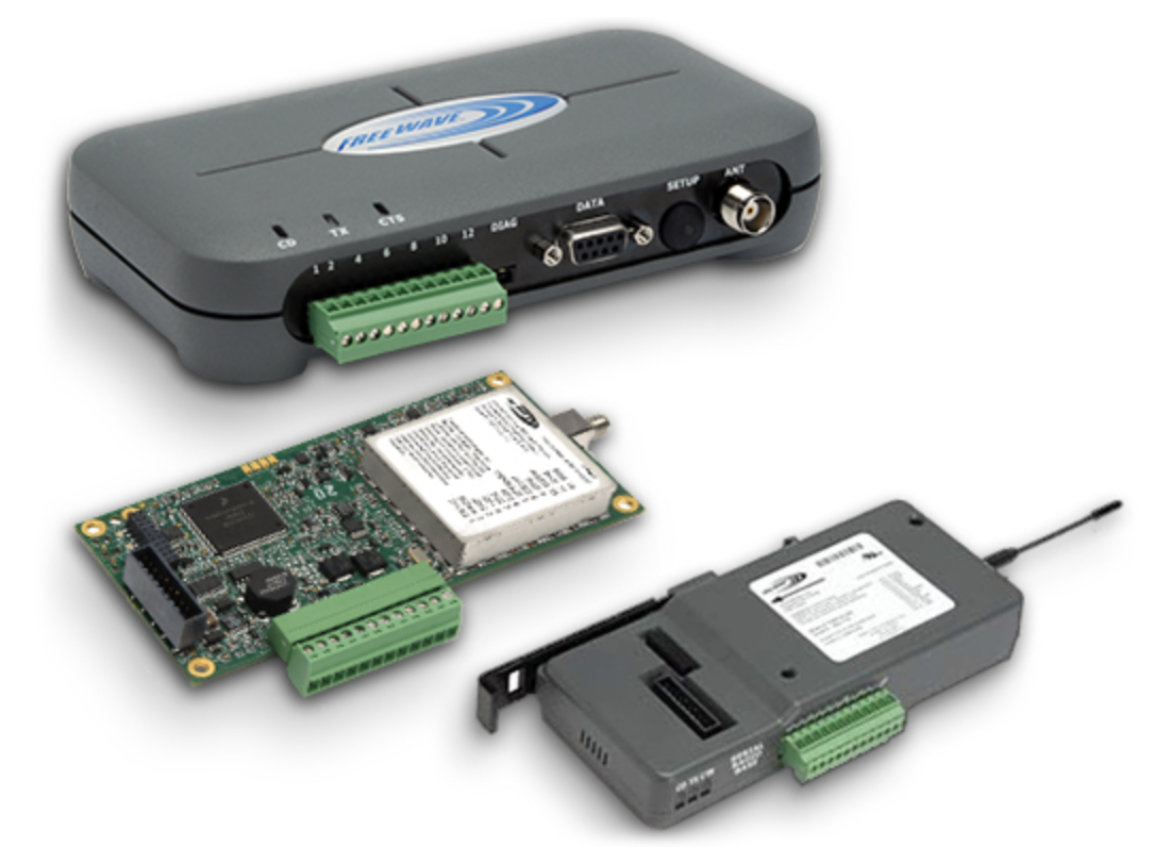Freewave IO Radio

Freewave radios are designed for seamless integration into networks that require reliable link performance and support low power, long range machine-to-machine communications. Freewave radios transfer data in noisy, challenging environments covering over 60+ mile distances. By utilizing Frequency Hopping Spread Spectrum (FHSS) technology, Freewave provides an alternative to expensive Wi-Fi bandwidth, cellular or fiber.
Frequency-hopping spread spectrum (FHSS) is wireless technology that transmits radio signals by rapidly changing the carrier frequency among many distinct frequencies in a large spectral band. The frequency band is divided into sub-bands and signals “hop” their carrier frequencies among the sub-bands in a predetermined order. The “hopping” frequencies are difficult to intercept and interference at a specific frequency will only last a short time.
FGR2-IO Series radios operate in the unlicensed 900 MHz spectrum and are available as a standalone board-level or enclosed device, as well as an expandable format to meet any wireless IO needs. All models can operate in one of two modes: Wire Replacement or Modbus. For wireless replacement mode, FGR2-IOS and FGR2-IOE can operate as a slave connected to an FGRIO-M master. In Modbus mode, all radios can be directly connected as an IO peripheral to a SCADA network. FGR2-IO Series radios can operate up to 60 miles with clear line of sight with the ability to extend through Endpoint/Repeater while the Modbus Gateway can be any FGR Series radio. The FGR2-IO Series radios offer error free communication utilizing 32-bit Cyclic Redundancy Check (CRC) with automatic retransmissions. They are Class I, Division 2 certified for operating in the temperature range of -40 degrees Celsius to 75 degrees Celsius and are ideal for solar power applications.
Wireless IO Radio Basics
The main purpose of wireless IO radios is to transmit a small amount of specific data that is collected by the radio, without help from any other electrical device, such as a PLC. Wireless IO radios are a great solution for situations where only a few signals need to be transmitted over a distance that is too far to run wires.
It is important to understand that unlike regular industrial radios that are designed to transmit and receive large amounts of data to and from many different locations, wireless IO radios are designed for a different purpose. These types of radios are designed to transmit or receive a relatively small amount of data. In many cases, it may be only a few simple signals. These radios allow various signal types to be wired directly into the radio itself. For example, there may be only a few different analog and digital signals that need to monitored. With a wireless IO radio, those signals can be directly connected to the radio, which it then transmits to another wireless IO radio at a different location. In most cases, wireless IO radios need to be used in pairs where one radio is designed to transmit data and the other radio will receive the data.

